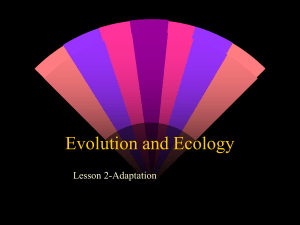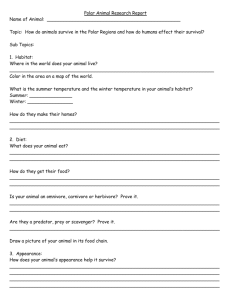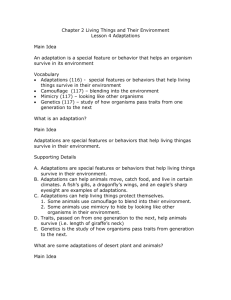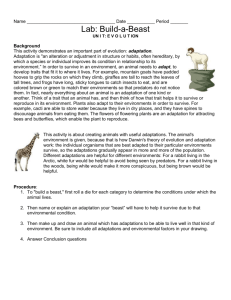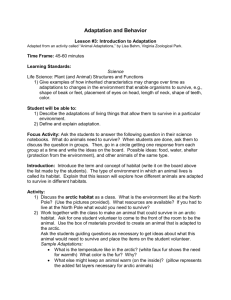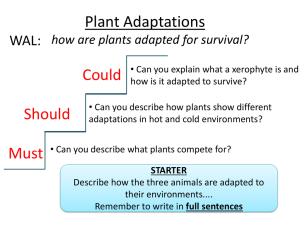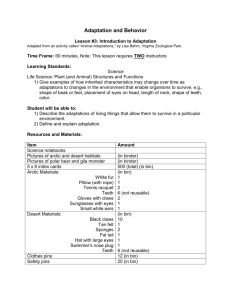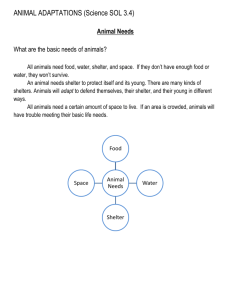Climate adaptations
advertisement
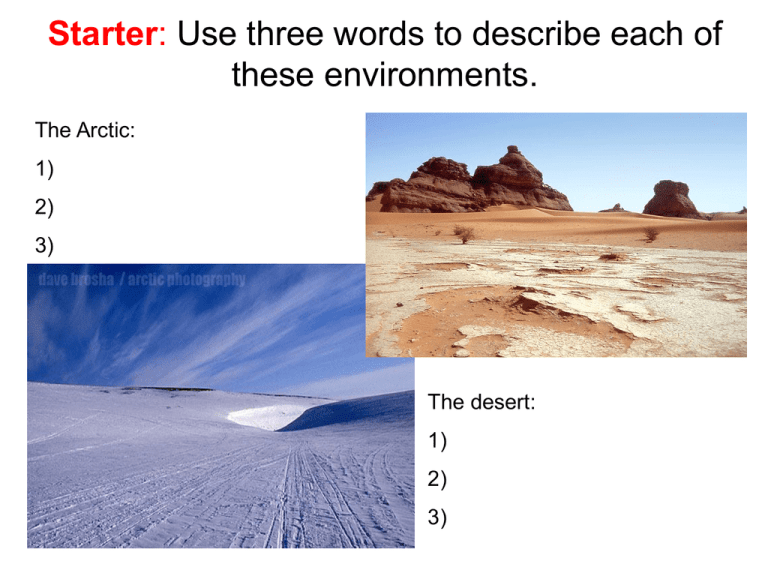
Starter: Use three words to describe each of these environments. The Arctic: 1) 2) 3) The desert: 1) 2) 3) Adaptation • Adaptation is a special feature or behaviour that makes an organism particularly suited to its habitat. • Adaptations may be general or specific. • General = having legs to walk or fins to swim • Specific = special features so an animal can survive in is environment A Shark’s General Adaptations What are a shark’s general adaptations to life in an aquatic environment? streamlined shape to reduce friction when moving through water fins provide stability, power and control gills have a large surface area so that oxygen can be extracted from the surrounding water A Shark’s General Adaptations What are a shark’s specific adaptations to life as an aquatic predator? specialized sense organs can highly sensitive detect the sound, movement and sense of smell that electrical fields of other organisms can detect drops of blood from miles away lots of very sharp teeth that are constantly replaced silver colouring underneath acts as camouflage Compare these two animals… Desert Fox Arctic Fox Adaptations • The two environments we saw before are harsh environments for animals to survive in so the animals have had to adapt to survive. • Climate adaptations- animals are adapted to survive in the conditions in which they live Animals in Cold Climates • Arctic animals must keep themselves warm to survive. • You loose body heat through your body surface, mainly your skin. • Arctic animals have developed many adaptations to help them survive… Look at the following… What do these animals have in common? Animals in Cold Climates Common features: - Thick fur coats - Layer of blubber under the skin - Colour – many change colour in the summer - What about body shape? Body Shape - Have fat, round body shapes with short legs - Have small ears – why? Animals in Dry Climates • Animals in dry climates have to keep themselves cool to survive. • They also have to cope with a lack of water. • This means they are unable to loose heat through sweating – why? Look at the following… What do these animals have in common? Animals in Dry Climates Common features: - Large thin ears - Little body fat - Thin, silky fur - Long limbs to help spread heat - They also often only come out at night. Why? - What about body shape? Body Shape Surface Area to Volume Ratio • Animals loose heat from the body surfaces that are in contact with the surrounding air/water. • Reducing this contact surface reduces heat loss • Increasing the surface increases heat loss Surface Area to Volume Ratio Hidden surfaces are exposed Compare these two animals… Desert Fox Arctic Fox Can you add any adaptations or reasons for the adaptation? True or false?
